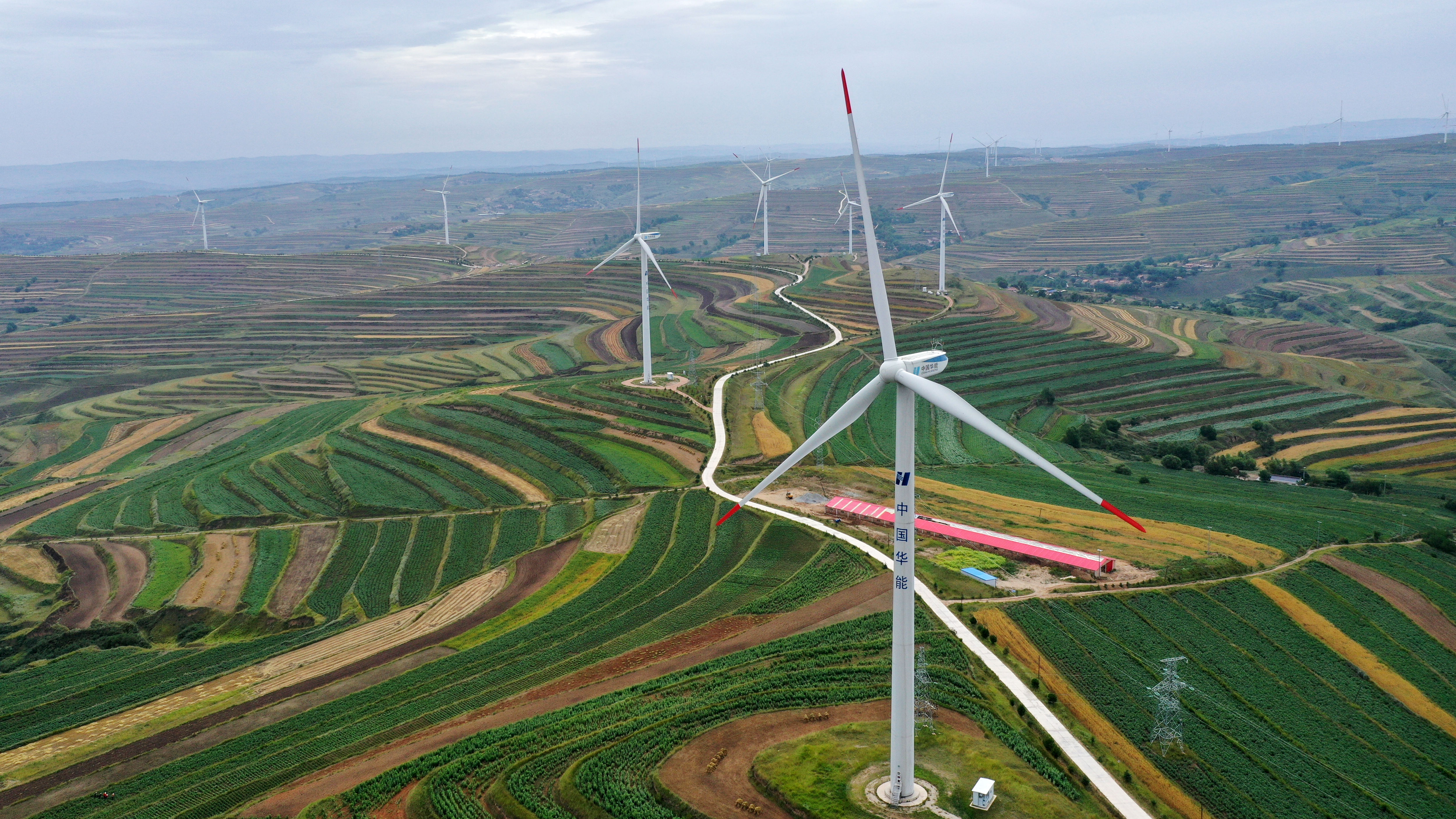China's vision to become a low carbon economy
- By Tom Fowdy
 0 Comment(s)
0 Comment(s) Print
Print E-mail China.org.cn, November 3, 2021
E-mail China.org.cn, November 3, 2021

The 26th United Nations Climate Change Conference, also known as COP26, has commenced in Glasgow in the U.K. There is widespread attention because climate change is becoming the defining issue of our world. The conference will revolve around how committed nations are to reducing their carbon emissions, switching to renewables to contain a global rise in temperatures, and keeping the promises made at the Paris Climate Accords back in 2015. The stakes are enormous, and British Prime Minister Boris Johnson described the summit as a "moment of truth."
The battle to fight climate change and transition to sustainable forms of energy is a global fight. It is wrong to politically scapegoat or shift the burden of commitment or blame onto a single country. Unfortunately, this is frequently the case with China, where owing to having the world's largest population, being the world's third-largest country by size, and being a developing country, it has often been singled out for blame over carbon emissions. Conversely, it has been frequently overlooked for what it has achieved and sets out to do already.
China's energy situation is complicated, but that does not mean there is no effort to shift to renewables, despite difficult circumstances. To grow sufficiently, China needs ever-increasing amounts of energy. China has rapidly transformed itself from a rural agricultural country into the world's largest industrial nation, with sprawling urbanization rates and growth in transportation. In going through this phase of development, China has lacked many privileges and advantages that Western countries have held in transitioning to renewable energy sources.
As a result, China faces the unique challenge of growing and developing while meeting burgeoning energy needs. This challenge has led to China becoming the single largest market and producer of renewable energy products globally. This has become the forefront of government policy. Last week, a new government white paper titled "Responding to Climate Change: China's Policies and Actions" was released. It sets out China's achievements in developing renewables and where it will be heading.
The paper explores how China is, across the board, investing in all kinds of renewables. This includes growing fleets of electric buses and vehicles, more emphasis on high-speed rail systems, the rapid development of nuclear and hydroelectric power infrastructure, as well as wind and solar capabilities. Such action has had outstanding results, with the proportion of non-fossil fuels in its energy consumption mix increasing to 15.9% last year, up 8.5 percentage points from 2005. This has included incredible advances in solar power capacity, which grew over 3,000 times, and wind energy 200 times.
According to the document, China's energy consumption per unit of GDP has become more sustainable, decreasing 28.7% from 2011 to 2020. Moreover, China has outpaced all other nations concerning producing and selling new energy vehicles for six consecutive years. In addition, the country is quickly phasing out the use of coal, in an "accelerated clean, low-carbon transformation" in the country's energy consumption mix, with the proportion of coal decreasing from 72.4% in 2005 to 56.8% in 2020.
As a result, China's record on climate change should not be attacked or scapegoated. Moreover, the accusation that China is exporting unsustainable development and forms of energy is a myth. For example, its construction of wind, solar and hydroelectric infrastructure in Pakistan and its commitment to freezing the financing of overseas coal projects.
The Western media often overlook these actions in favor of stereotypes. China is a more significant country now and, therefore, a more prominent global stakeholder. However, as a developing country, China has pursued a broader and deeper effort than its Western counterparts.
Thus, the battle against time to control climate change is a global endeavor. China is leading a renewable energy revolution as a critical partner because it tackles the twin pressures of energy demand growth and climate change. If the world steps up with the same scale and scope of action, then it's fair to say humanity will succeed.
Tom Fowdy is a British political and international relations analyst and a graduate of Durham and Oxford universities. He writes on topics pertaining to China, the DPRK, Britain and the U.S. For more information please visit:
http://www.china.org.cn/opinion/TomFowdy.htm
Opinion articles reflect the views of their authors, not necessarily those of China.org.cn.
If you would like to contribute, please contact us at opinion@china.org.cn.






Go to Forum >>0 Comment(s)